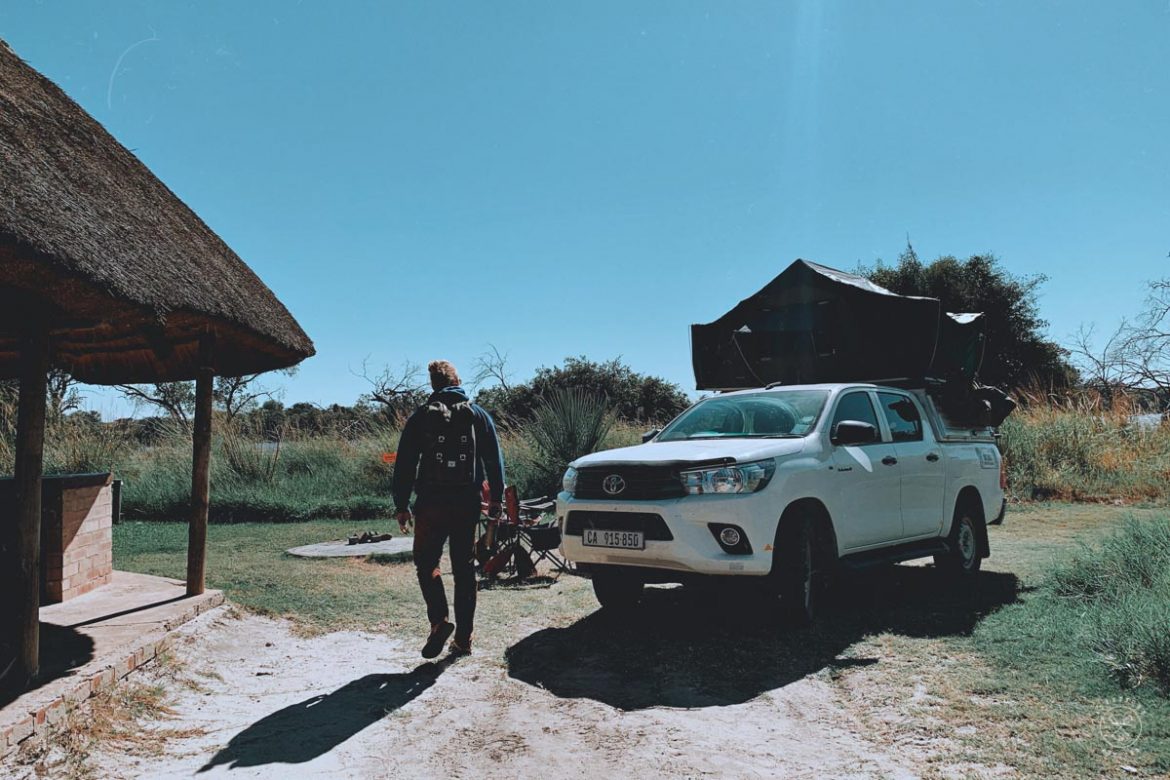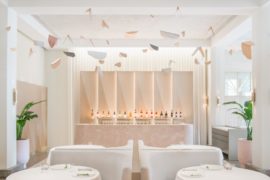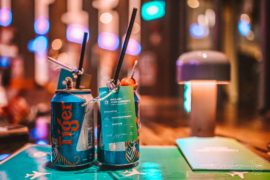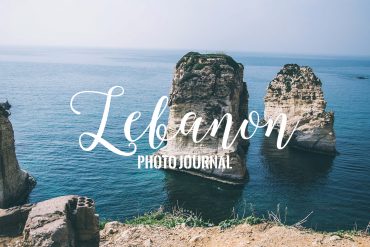If you are planning a road trip in Botswana and planning to do a few self-drive safaris, Chobe National Park and the Okavango Delta is certainly one you can’t miss! You must be on point with your information, and for several reasons as tour companies and locals are quite protective of their national parks to encourage local businesses while you book their local safari excursions.
Best time to go do a self-drive safari in Chobe
First things first, when is the best time to visit Chobe National Park? We traveled in early May in Botswana. April to October is the best period to go to the Southern African part in general for wildlife watching. As the dry season is during this period, animals tend to roam more around waterholes, making it easy for animal spotters like us to find them around those points of interest.
Weather is chilly at night and hot during the day but not horribly hot, which makes it even better for safaris.

Chobe National Park fees
Park fees are to be paid at the entrance gates. Fees are valid from whenever the time you pay them until the next day at 11 AM. Foreigner adults are 120Pula per person, per day and cars are 50Pula (about 10 pula is 1$USD) Campsites within the park are approximately 50$USD per night.
Recommended car for a self-drive safari at Chobe National Park
Needless to say, you better be experienced driving on sandy roads and off-road because there are no nice roads at all in Chobe! Better not drive alone but with another car for the classic and famous “just in case” situation!
This mean that you better have a car that can drive off-road, means that it is recommended to drive a 4×4. 4×2 tend to also get stuck so if you are driving a 4×2, just go along with friends so they can tow you out in case of being stuck. If you plan to only rent your car in Botswana, you can rent self-drive 4×4’s in Maun or Kasane.
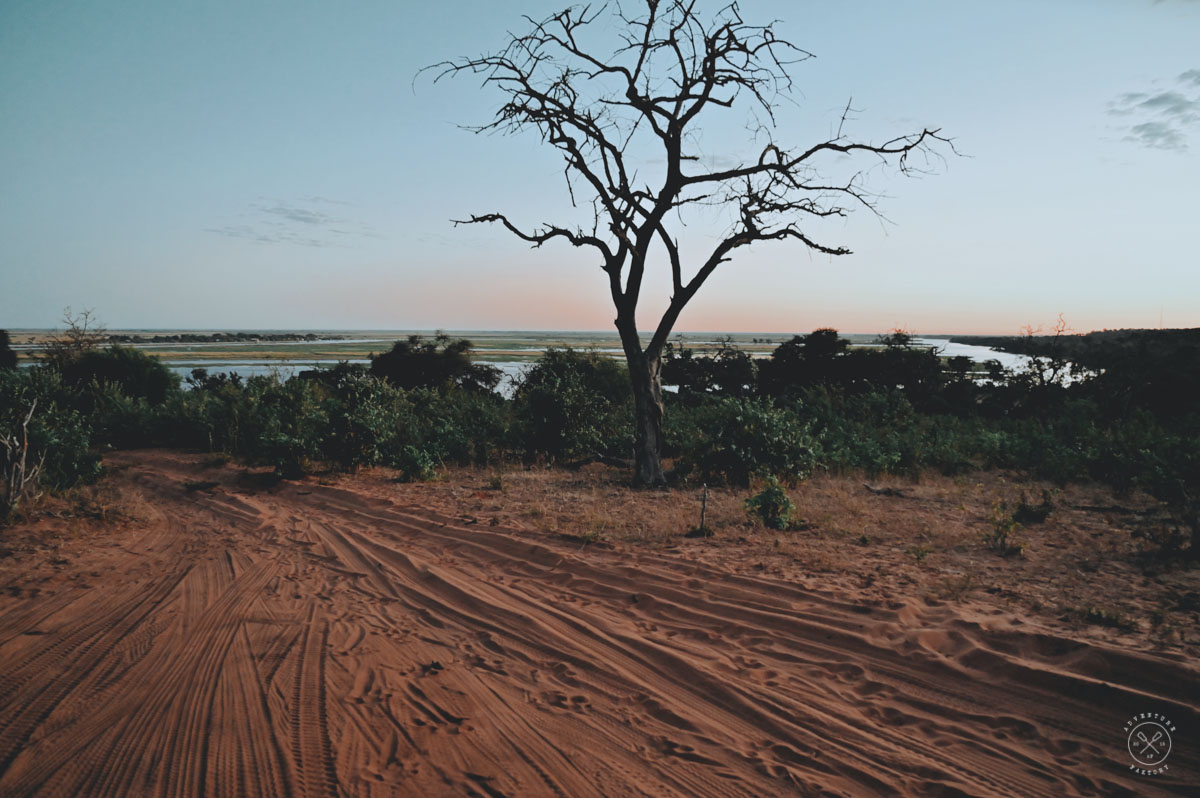
How to get to Chobe National Park and get around
Chobe has several gates to the reserve but from Kasane, you will take the main one that all safari’s of the lodges around take. Pay your park fees and the adventure begins.
If you drive North coming from Maun (a central city in Botswana), you will visit Moremi National Park before entering Chobe.
You won’t get good cellphone reception at all, non-existent we must say, so it is recommended to have your Maps.me downloaded to navigate and being able to pin places you’ve seen in the park. Tracks4Africa is a recommended app to get your way around in the National park. as it includes interest points like campsites, attractions, petrol, etc. In other words, it’s like iOverlander but with more information and which you will have to pay 20$US to buy the Botswana guide. Your GPS or Garmin will work to navigate around as well.
Things you need for a self-drive safari in Chobe National Park
- Proper vehicle: As we mentioned before, you better have a 4×4 and a driver comfortable driving on sandy roads and off-road. It is very common for cars to get stuck in Chobe.
- Food & drinks: Get all the snacks you need for the day if you plan to only do a day trip. If you plan to drive to a campsite within the park, make sure to have everything you need for dinner unless you plan to dine at the restaurant of your lodge. Make sure to bring a whole lot of water with you as it can get hot during midday.
- Extra fuel: Only if you plan to stay within the parks, bring enough gas as there are no petrol stations in the parks. If you drive from North to South towards More, you can find fuel in Khwai village in Moremi from locals but it is expensive and it is not certain to get some.
- Sat phone: If you plan to get really adventurous staying long in the national park, it is recommended to have a satellite phone to be able to have some means of communication for emergency situations.
Camping and staying in the park during your self-drive safari in Chobe National Park
Note that it is quite expensive to camp within the camp. Prices are around 500 Pula (around 50$US) per person just for camping in the park. We really recommend you to stay at one of the lodges around and get in an out of the park after your safari.
Kasane is a popular base for people that want to do a Chobe Safari and there are several options you can choose from. During high season, it is highly recommended to book in advance, otherwise, you are fine doing like what we did and choose one from iOverlander and drop-in to see if they have space. We personally camped at the Thebe River Safari Lodge and also tried their safari sunrise game drive at 440 pula per person.
If you plan to camp within the parks, you will probably need to book in advance as they are your only options for accommodation. Wild camping is not recommended nor allowed and if a ranger catches you wild camping, you will be invited to leave.
List of lodges/campsites in Chobe
There are 3 public campsites in Chobe but the public still means that you need to pay to stay there! Note that the stays inside the park are mostly booked out well in advance, mostly because of the tour groups.
- Savuti Campsite & Linyanti Campsite (by SKL Camps), note that the road to Savuti can be hectic just after the rainy season and that guests have been minding the terrible noise of the generator.
- Ihaha Campsite(by Kwalate Safaris)
- Other options are Mwandi view and Muchenje campsite, around 14km to the western gate of Chobe.
List of lodges/campsites in Moremi
- Xakanaxa Campsite & South Gate Campsite (by Kwalate Safaris)
- Third Bridge Campsite and Gcodikwe 1 Island Camp (by Xomae Group)
- North Gate Campsite (by SKL Camps)
Chobe National Park Self-Drive Safari Complete Checklist
- 4×4 vehicle
- Good camera with a zoom lens, 70-200mm or 200-400mm, read more about our safari Nikon photography gear
- Petrol if you have a small
- 4×4 Toolkit (recovery kit): make sure it has a shovel, high-lift jack, sand ladder and tow rope
- Lower your tire pressure as soon as you enter the park as it is sandy right away
- Tire air compressor
- One or ideally two spare tires
- A satellite phone or other navigation systems
- Food and beverages, lots of water
- First aid kit
- Lighting devices
- If you are camping, make sure you have your own wood, matches, etc just in case the lodge doesn’t have any for you to buy
The recommended number of days for a safari in Chobe National Park
Specifically, if you are self-driving, it is recommended to stay about 5-days to about a week if you plan to as well see Moremi National Park. That long period is suggested just to increase your chances to witness animals hunting and for you to spot the harder species like lions and leopards.
What animals can be spotted in Chobe National Park
- Elephants, a whole lot with their beautiful tusks
- Giraffes
- Springboks
- Impala
- Hippopotamus
- Warthogs
- Ostrich
- Buffalos
- A whole lot of birds
If you are lucky you can also spot
- Lions
- Leopards
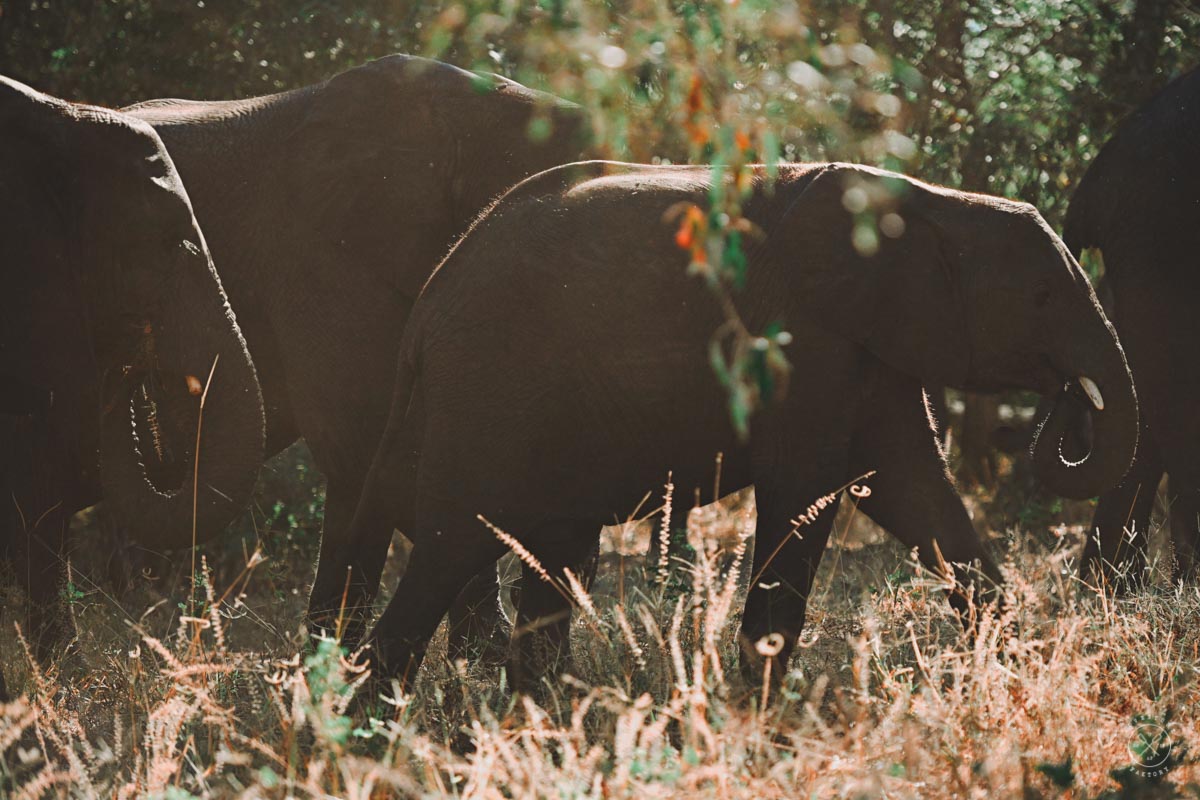
Have a Safe Safari in Chobe!
Hope you get an amazing time at the Chobe National Park for your self-drive safari. Information is important, so let us know in the comments below if any changes or extra tips would be useful for travellers to know about.
PS: Note that after some research, we found that rangers sometimes make you wait until 9 AM to give priority to all the private safari guided tours. This is not always enforced but when it happens, there is no point to argue to make them let you in.
- Let us know how your trip goes and please do contribute and leave us updated info in the comments section so every future traveller can benefit from the collective knowledge.
- If you want to drive Southern Africa like us, go read Driving From Cape Town To Johannesburg Passing Through Nambia, Zambia and Botswana so you can get all the precise and day to day tips from our experience!
- Don’t forget to book your travel insurance before travelling.
- If you don’t have your flights, check out ways to book the cheapest fares here.
If you like this article, follow our Adventures on Facebook, YouTube, Twitter, Instagram @adventurefaktory, but most importantly sign up to our E-mail list to keep up with updates and travel trends + deals!

